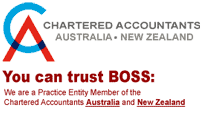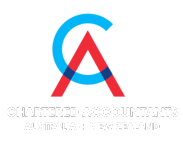If you have not previously engaged in outsourcing, you may be curious about how it can seamlessly integrate with your firm’s existing workflow.
Organising your firm
Outsourcing presents an underappreciated advantage: it can serve as a valuable indicator of your firm’s organisational level. This process may act as a crucial wake-up call for some organisations, highlighting the necessity of establishing a structured workflow. A well-organised operational framework significantly enhances the effectiveness of outsourcing, particularly for larger firms.
The wake-up call concerning operational efficiency comes as many fundamental tasks—such as compliance and bookkeeping—are increasingly outsourced internationally. As a result, your in-house team will be required to provide essential information in a more timely manner. This scenario presents an advantageous opportunity, as it allows for the potential to accommodate new clients effectively.
While smaller or solo firms may successfully outsource these functions without implementing significant changes, larger organisations—or those that are already of medium size or greater—will likely benefit from designating an administrator to streamline processes and facilitate communication among teams.
Let’s use a hypothetical firm of 3 members as our example
They are:
- The Principal
- Client Relationship Manager (Senior Accountant)
- Client Services Administrator (An Administrator or Receptionist)
On a file (for example, a tax return) for an existing client:
- The Principal does an end review and signs off on the file.
- The Client Relationship Manager interviews the client and liaises with the client for any follow-up information needed by your overseas team.
- The Client Services Administrator gathers all of the pertinent data, does the initial prep of electronic work papers, prepares the fee proposal, performs the usual related admin duties (photocopying, filing, etc.), prepares outgoing correspondence to clients regarding Aus or NZ tax requirements, ASIC (lodgements, reporting, updates, form prep and distribution), checks Banklink data going to and from client, and collates all reports that will go to the clients.
In summary, the Client Services Administrator serves as the intermediary responsible for preparing and transmitting all relevant information to your outsourced accountant. The primary objective is to alleviate a significant portion of routine tasks from the in-house accountants, thereby allowing them to focus on more sophisticated projects and strengthen client relationships.
If you are seeking guidance on the appropriate ratio between the two specified positions and your overseas personnel, we recommend as a guide a structure of approximately 1 Senior to 1 Receptionist for every 4 outsourced accountants.
Bigger jobs are better
To optimise your cost-benefit ratio, we recommend that you focus on tasks that would require more than three hours of your time to complete independently. This approach is advisable because some preparation will be necessary on your part. Engaging in smaller tasks may consume a disproportionate amount of time in preparation, ultimately diminishing their overall value for you.
Two rounds of queries
Our overseas team compiles their inquiries; however, we have observed that it typically requires two rounds of queries to ensure complete clarity. To streamline this process, it is advisable to gather all pertinent information upfront. This practice will become more intuitive as you acclimate to collaborating with your overseas colleagues.
It is essential that your service provider communicates mid-job inquiries in a clear and accountable manner. A series of individual emails can lead to confusion and complicate the workflow. At BOSS, we have observed that most accounting firms we collaborate with prefer to receive inquiries consolidated in an Excel spreadsheet. We recommend addressing all queries thoroughly before returning the completed spreadsheet to your overseas team for streamlined communication and effective management.
Educate your clients
Enhancing your workflow efficiency is achievable by proactively encouraging clients to submit their information in a timely manner, rather than waiting until the last minute. To foster a positive early filing habit among your clients, consider dispatching courteous reminder letters in July and December. Additionally, including a checklist tailored to each client’s specific requirements can further facilitate this process by outlining the necessary information needed from them.
Workflow managers
Incorporating a dedicated individual to oversee workflow management—including task delegation, identifying workflow interruptions, establishing performance targets, and recommending improvements—will largely depend on the scale of your organisation. Should you prefer not to make a specific hire for this role, a Senior Accountant could effectively assume these responsibilities.
The primary objective is to ensure that the desks of Senior Accountants and higher-level personnel remain as unobstructed as possible, enabling them to concentrate on driving the firm’s growth.
Communication
Engaging with the appropriate outsourcing partner can facilitate seamless communication with your overseas team. You will have the opportunity to establish regular review sessions, whether on a weekly or monthly basis. It is essential to keep your outsourced personnel informed about any modifications made to your procedures.
A reputable accounting outsourcing provider will offer direct access to the accountants responsible for executing tasks, ensuring that there are no barriers preventing timely and efficient communication of relevant information back to you.
From your perspective, the process is straightforward. Simply engage in a brief two-minute update conversation with your overseas accountant, similar to how you would communicate with an in-house accountant; this can conveniently be conducted over Skype. Additionally, you may incorporate overseas team members into group meetings in a similar fashion.
Importantly, do not hesitate to address any concerns you may have. A reputable service provider will strive to align their outsourced accounting practices with your established workflows as much as possible. However, it is essential for them to be made aware of any issues before they can take steps toward resolution.




